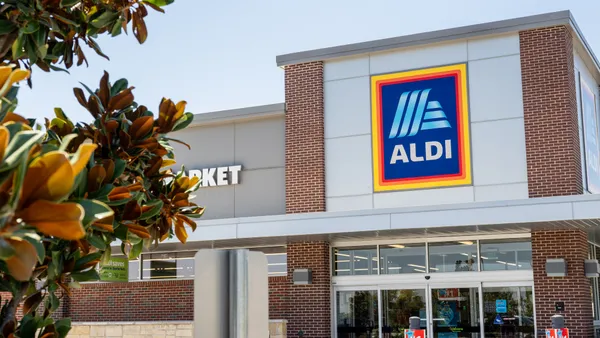Dive Brief:
- Consumers now spend an average of $6.7 billion on online groceries each month, more than double the $3.1 billion they spent each month in the channel prior to the pandemic, according to Adobe.
- Adobe, which analyzed more than a trillion visits to U.S. retail sites, said grocery is now a “major” online category that’s expected to top $85 billion in sales this year.
- In a separate analysis, Adobe noted that online grocery prices rose 7.6% in February, marking the 25th consecutive month of price increases in the channel.
Dive Insight:
Adobe’s findings further highlight just how much online shopping has grown over the past two years, and the fact that it now stands as a major sales channel for retailers.
But the report also highlights the dramatic slowdown in online grocery’s growth, which presents new challenges for companies as they try to build toward a digital future.
In 2020, online sales surged 103% to more than $73.7 billion, Adobe noted in its analysis, establishing a new baseline for the industry. Last year, sales increased 7.2%, to $79.2 billion, and this year the firm projects the industry will see around the same growth rate.
So while the pandemic’s early days pushed grocers to expand their online capabilities and services, those investments aren’t projected to power significant ongoing growth in the near future. Shoppers have returned to stores en masse as pandemic restrictions have lifted. And some digital grocery companies appear to be struggling with the loss of momentum. The Information reported last week that major Instacart investors T. Rowe and Fidelity are marking down the value of their stakes in the online grocery company, which was valued at more than $39 billion a year ago.
Major grocers, like Kroger, are pushing forward with costly fulfillment technology and proprietary delivery services to capture those online growth dollars. Independent grocers and regional players, meanwhile, can’t compete at the same level in the digital arms race, though some are rolling out branded delivery and pickup services as well as new experiences like health programs powered by artificial intelligence.
Grocers are also investing in faster delivery as a way to generate demand. Kroger, Publix and Ahold Delhaize's U.S. banners have linked up with Instacart’s 30-minute delivery service, while Albertsons recently kicked off “express” delivery via DoorDash at 300 stores.
High prices could be tamping down online grocery demand. Adobe reported that e-commerce pricing in the industry have moved “in lockstep with the Consumer Price Index,” and that doesn’t include the additional fees that consumers often pay for online orders. Some companies, like The Giant Company and Giant Foods, have erased pickup fees in a bid to reach price-conscious consumers with their expanding digital services.
Overall retail e-commerce sales totaled $885 billion last year, up 8.9% over the prior year, according to Adobe, and are expected to surpass $1 trillion this year as companies roll out more personalized services. Groceries along with electronics and apparel powered 41.8% of e-commerce sales in 2021, the firm noted.










